Here is a selection of more pictures of mushrooms I found last summer. With each day that passes we get closer to Morel mushroom picking season! That will be my next post.
I picked mushrooms from different locations in my archives today to show an example of how diverse fungi can be.
First some background knowledge about mushrooms. The mushroom itself that is visible is not the organism, rather it is the fruiting body. The actual organism is a web-like structure underground known as mycelium. Think of this as the tree and the mushroom that pokes out as b the apple that can be picked and eaten. Most mushrooms you will encounter in the wild will not be edible. Make sure to properly identify any mushrooms you find or have the help of an experienced mushroom hunter.
There are many characteristics about a mushroom used in their identification. These include but are not limited to cap concavity, presence of either gills, folds, or pores, presence of an anulus(ring), and probably most important: the color of the spore print. Even smell can be useful in identification. For example, this mushroom smells of soapy citrus!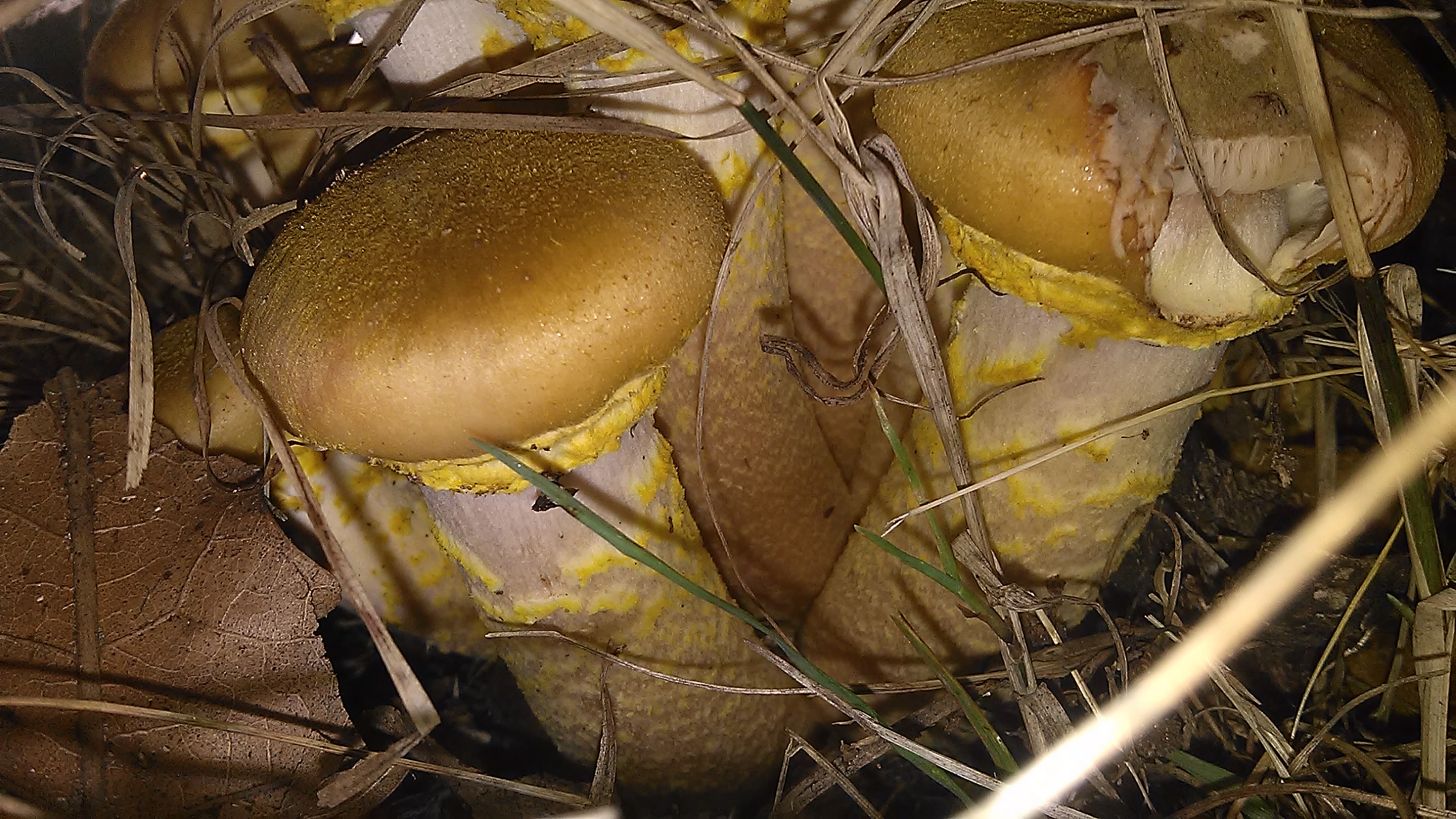
This next picture is a bolete, a family of edible mushrooms. However, since the stipe (or stem) is red and this mushroom bruises blue when cut, it means this particular mushroom is either toxic or just plain inedible. 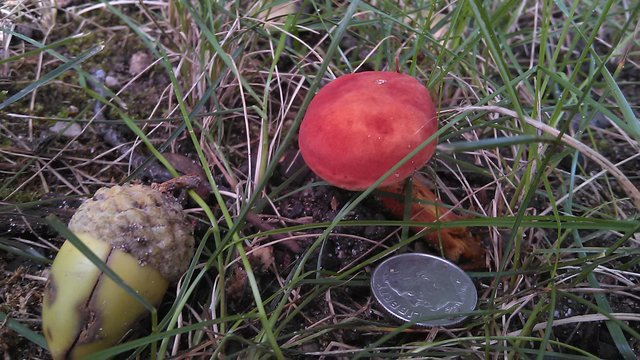 !
!
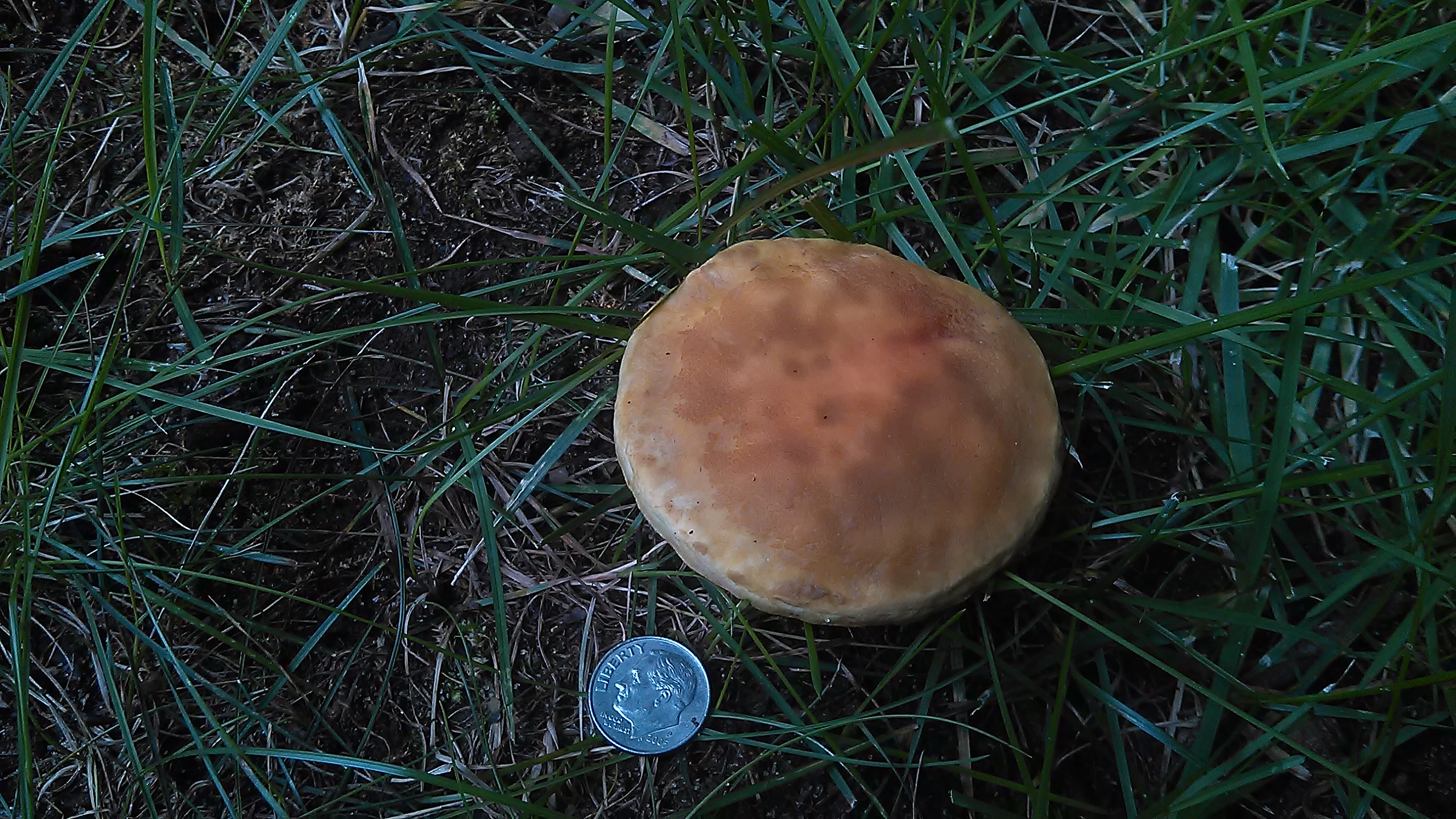
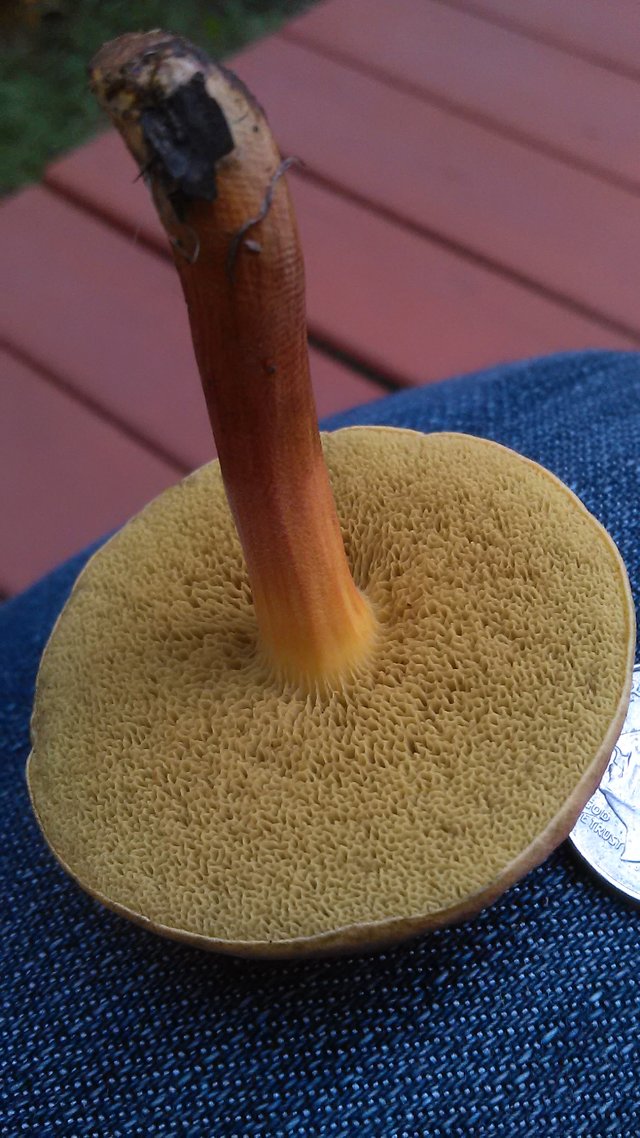
By far some of my favorite color variations on mushrooms are red and white, though I have yet to see the classic stereotypical red and white spotted Amanita 🍄
These two look similar but are probably different species. One was found in Indiana while the other was found in Illinois. 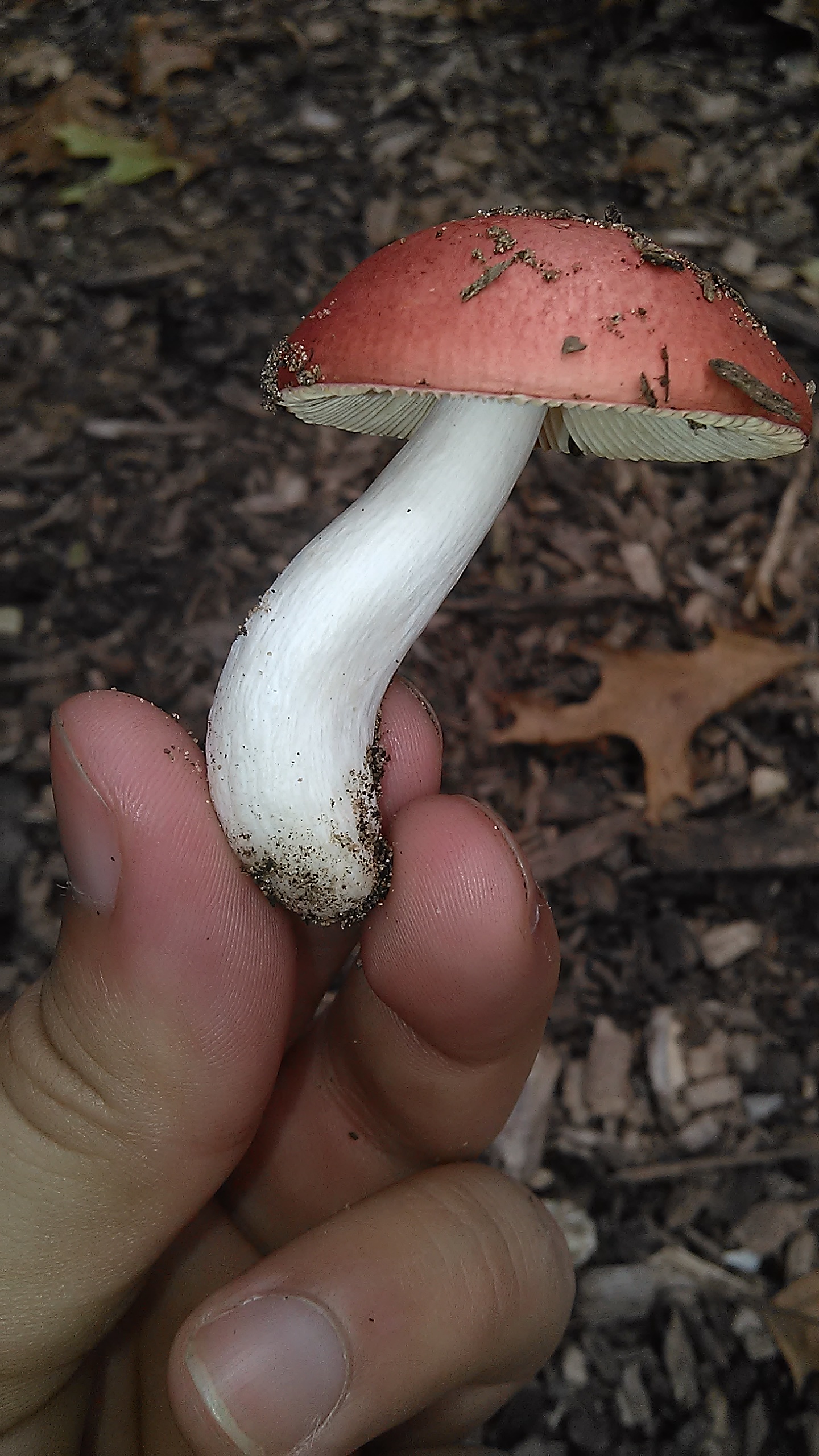
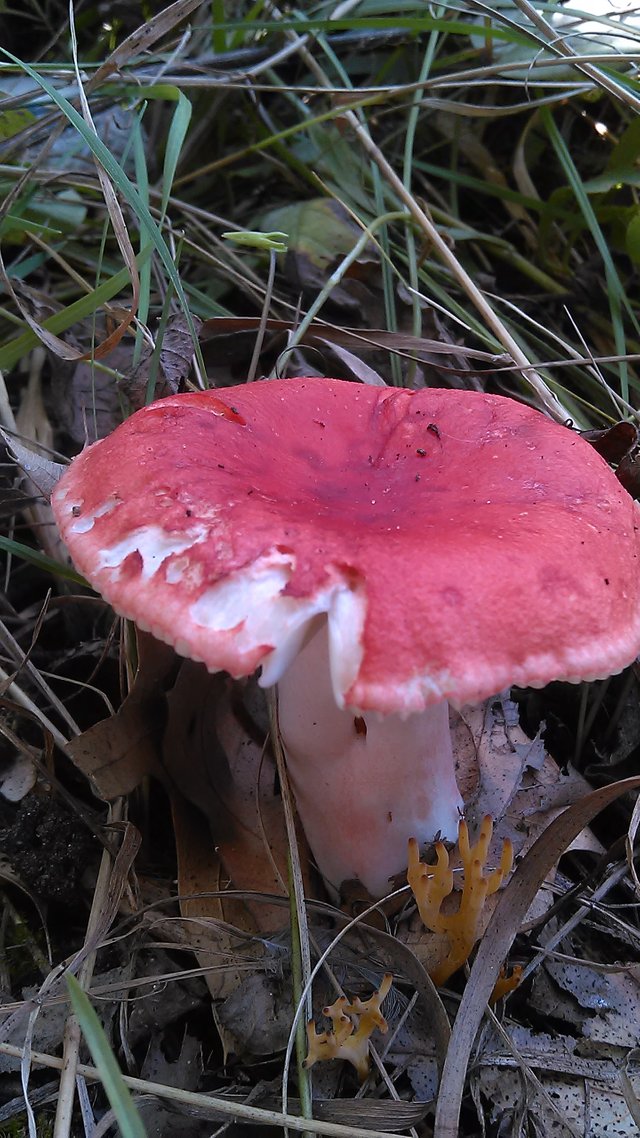
Speaking of Amanitas, here is one I believe to be Amanita thiersii. It was growing in my grandpa's backyard and he just let it mind its own business, swerving his lawn mower out of the way when he passed by. He said these are common in his yard and said that the cap flattens out much more with time. Perhaps this mushroom, which was the size of a McDonald's medium drink (I'm at work right now and that's the first size reference I saw) was not fully mature. Its spores are, yes you guessed it, white. Although it looked scrumptious and had a nice "mushroomy" smell to it, beware: Amanitas are known for their deadly toxins.
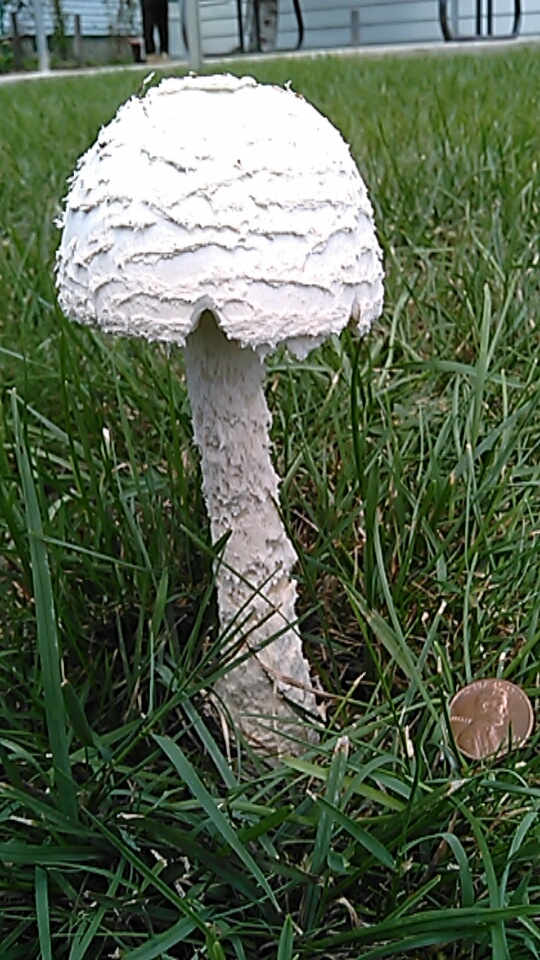
This next off-white beauty, though not as robust as the last, was quite taller. It looked beautiful growing in the sandy soil, all by itself in the sun. While mushrooms don't need the sun to survive, many follow the light and grow towards it. This is probably an adaption so that they can grow upwards with the gills under the caps facing down so that their spores fall right out and ensure its proliferation.
Looks like another Amanita but I could very well be wrong. I'm just an enthusiast, not an expert.
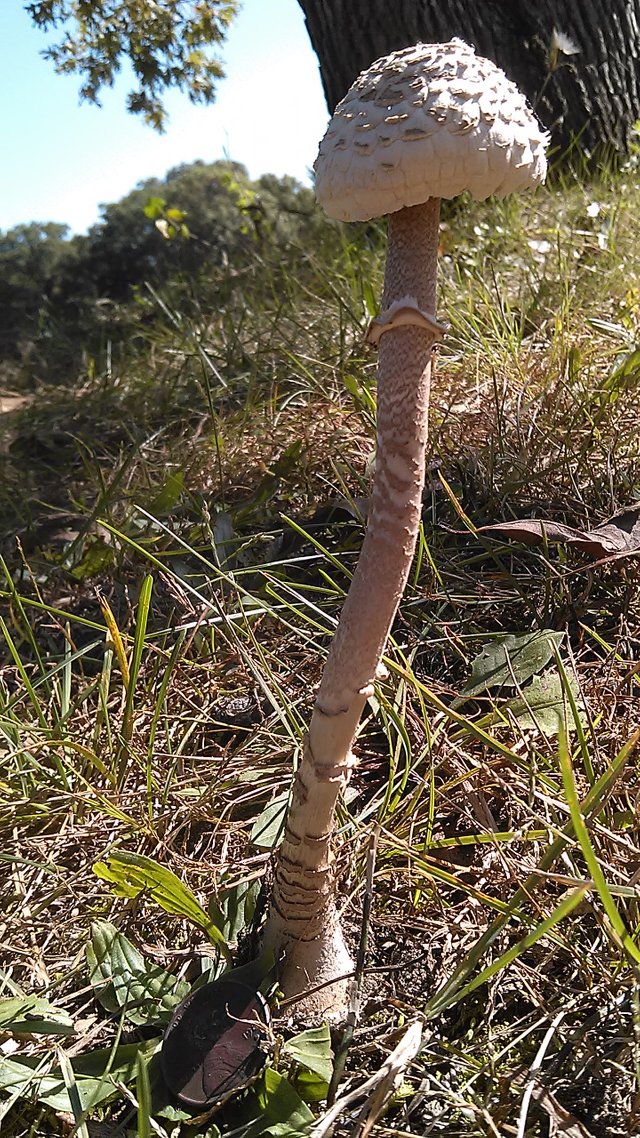
Hope you enjoyed this post! Stay tuned for the next one, which will be all about the valuable and highly covered Morel mushroom and how to find it!
These are great photos! I'm also a mushroom enthusiast. I just got a book for specifically identifying Missouri mushrooms.
Downvoting a post can decrease pending rewards and make it less visible. Common reasons:
Submit
Thank you! Follow me if you want to see more!
I'll make a post about morels next!
Downvoting a post can decrease pending rewards and make it less visible. Common reasons:
Submit
Check out these too!
https://steemit.com/mushrooms/@proto26/mushroom-season-is-coming
Downvoting a post can decrease pending rewards and make it less visible. Common reasons:
Submit
That last one could very much be a parasol! Our daughter loves picking them!
https://steemit.com/foraging/@bghandmade/mushroom-hunt
Downvoting a post can decrease pending rewards and make it less visible. Common reasons:
Submit
I just saw your post, a very beautiful mushroom! They do look similar. I might have to go back and see if more grow there to test its spore print to see if it really is one. Are they edible?
Downvoting a post can decrease pending rewards and make it less visible. Common reasons:
Submit
They're one of the best that grows around here! Also one of the very few that can be easily dried and used as a spice in cooking!
Downvoting a post can decrease pending rewards and make it less visible. Common reasons:
Submit
See if you can find the coral fungus in one of the pictures!
Downvoting a post can decrease pending rewards and make it less visible. Common reasons:
Submit
I think I found it! The 6th photo down?
Downvoting a post can decrease pending rewards and make it less visible. Common reasons:
Submit
Correct! You are the winner!
Most Clavarioid fungi are saprotrophic.
They grow mostly on the ground in woodlands and mossy grasslands. This one is branched!
Downvoting a post can decrease pending rewards and make it less visible. Common reasons:
Submit